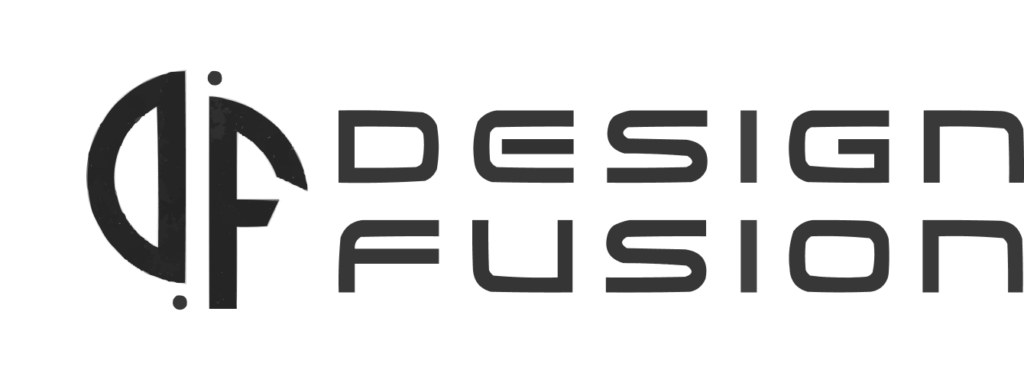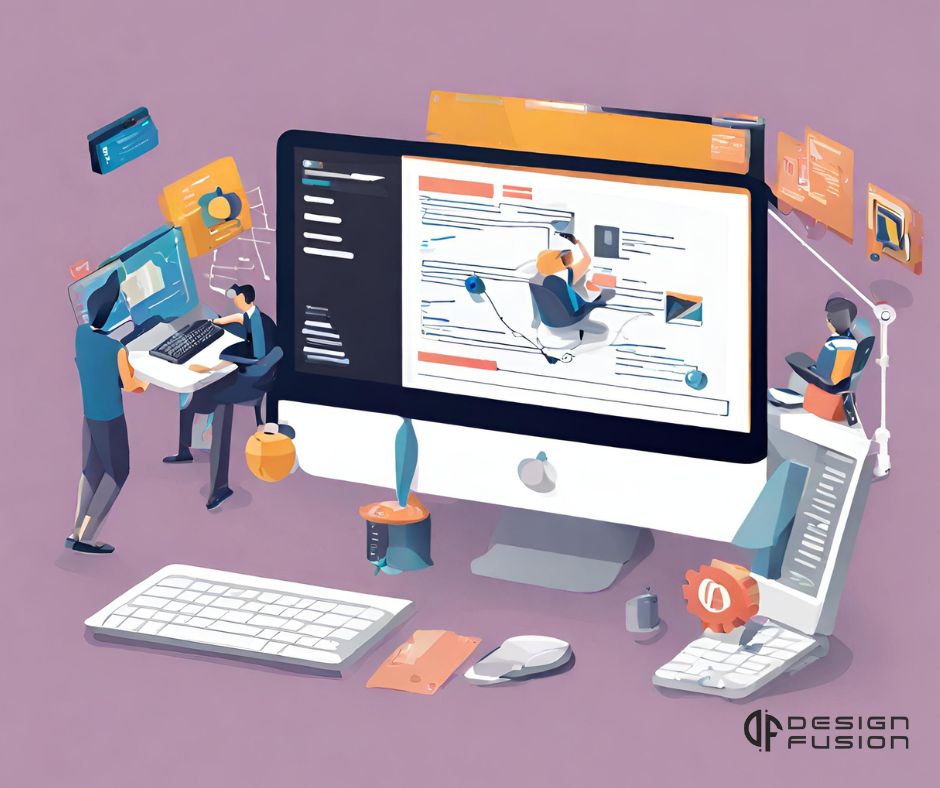Web development is significant in this fast-paced time. Where everything is changing every day and becoming modern and more techy. Web development or having a website is like building a house over the internet. It involves creating and designing websites or web applications that people can visit and interact with using their web browsers.
Choosing the right platform for web development is crucial because it’s like picking the best tools and materials for building your house. The platform determines how easy it is to build your website, how well it performs, and how secure it is.
There are many things to think about when choosing a platform, such as how easy it is to use, how much you can customize it, how fast it works, how safe it is from hackers, and how much help you can get if you run into trouble.
This is why, knowing about the best platform for web development or say creating a website is important. That is why, in this blog. We’ll check out the best options available in the market and then you can find which platform suits you best.
Before, rolling the list of best web development platforms. It is very important to know about factor that needs to consider before choosing the best platform to create a website.
Factors to Consider
Ease of use
It is important that a platform should be easy to use and easy to navigate. Platform or User interface should not be complicated which makes it hard to figure out where things are.
Flexibility and customization
Whatever platform you choose should be like a versatile toolbox that can handle different types of projects, whether it’s a small blog or a big e-commerce site. There should so much flexibility so that you can have a dream website in real life.
Performance
Your website should load quickly and run smoothly. It should be buttery smooth. However, hosting is one of the key elements which is responsible for making a website fast. Nobody likes waiting for a slow website to load!
Scalable
Imagine your website is a store, and suddenly there’s a big sale. Your platform should be able to handle lots of people visiting your site at once without crashing.
Security
Just like how you lock your doors. your website also needs protection too. Your platform should have built-in security features to keep hackers out and keep your data safe.
Regular updates and patches: Think of these like getting regular check-ups for your website. Your platform should be updated regularly to fix any security holes and keep everything running smoothly.
Community and support
Maybe this won’t seem important. But, this plays a significant role when you have obstacles while developing a website. This is like having a big group of friends who can help you if you get stuck. A platform with an active community means there are lots of people who can answer your questions and help you out with your queries.
Availability of documentation and tutorials: These are like instruction manuals for your platform. They should be easy-to-find and understand documents or say tutorials in written or video format, so you can learn how to use your platform effectively and wisely.
Now, let’s roll the list of best platforms for web development
1. WordPress
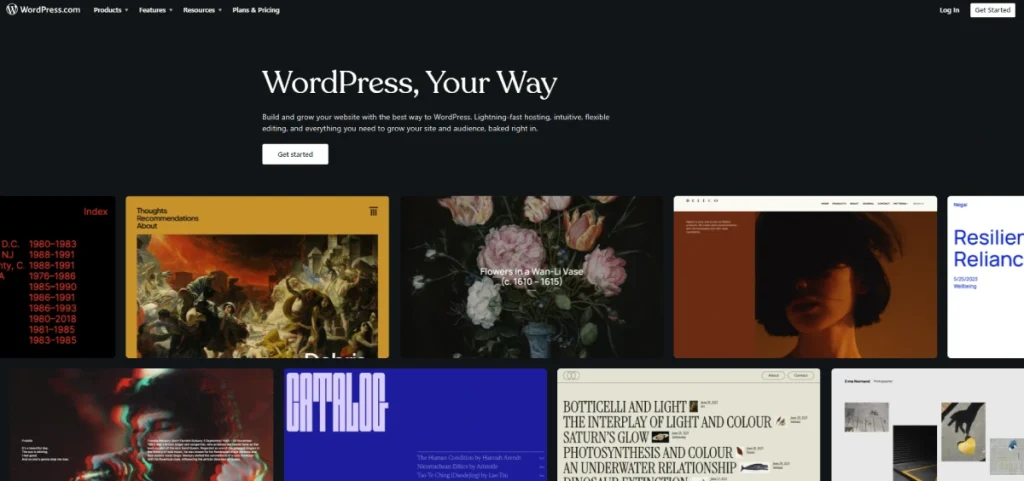
WordPress is a popular content management system (CMS) that powers numerous websites on the internet. It’s known for its flexibility and ease of use, making it suitable for both beginners and experienced developers. WordPress started as a blogging platform but has evolved into a versatile CMS that can support various types of websites, including blogs, e-commerce sites, portfolios, forums, and more dynamic and stunning websites. It offers a wide range of themes and plugins that allow users to customize their websites according to their needs.
There are two types of WordPress in the market. The first one is wordpress.org which is free and open source. Also, considered an advanced one as it gives more flexibility to the developers to create stunning websites.
Whereas, wordpress.com is also a popular platform but it is a paid one.
Pros:
User-friendly interface: WordPress is known for its intuitive dashboard and easy-to-use tools, making it accessible for users with little to no coding experience.
Extensive plugin repository: There are thousands of plugins available for WordPress, allowing users to add features and functionality to their websites without needing to write code from scratch.
To understand what plugins do. Let’s understand with the example. Suppose, you want to make your website faster and want to compress images that you have used on your website. You can do this with the help of various plugins. One of the plugins is Litespeed cache.
Large community support: WordPress has a vast community of developers and users who contribute to its development, provide support, and share resources such as themes, plugins, and tutorials.
SEO-friendly: WordPress websites are optimized for search engines, making it easier for them to rank higher in search results. Moreover, there are also free and paid SEO plugins available in the WordPress repository.
Regular updates and security patches: WordPress releases regular updates to improve performance, fix bugs, and address security vulnerabilities, ensuring that websites remain secure.
Cons:
Vulnerable to security risks: Because of its popularity, WordPress websites can be targeted by hackers, especially if not properly maintained with updates and security measures.
Performance issues with heavy customization: While WordPress offers flexibility, complete customisation options to websites with numerous plugins can sometimes experience performance issues such as slower load times.
Dependency on plugins: While plugins extend WordPress’s functionality, relying too heavily on them can lead to compatibility issues and security vulnerabilities.
2. Wix
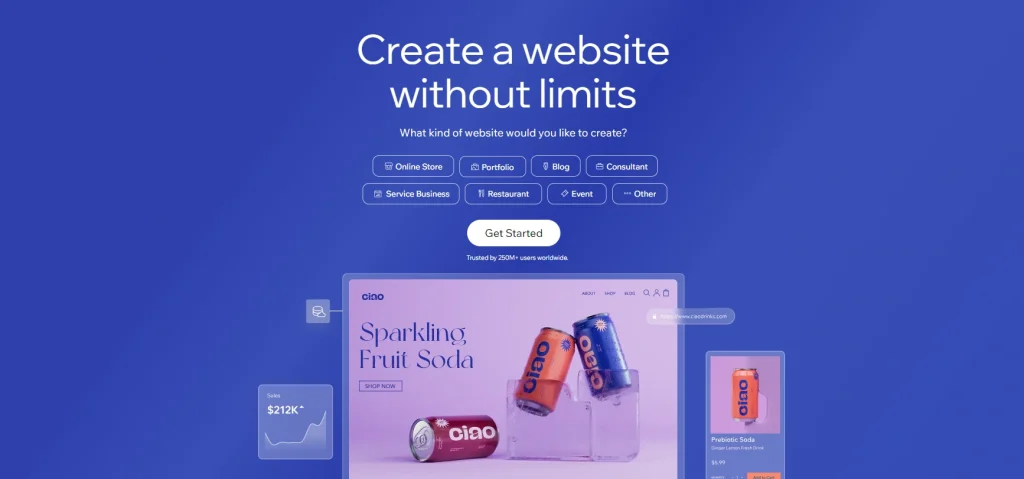
Wix is one of the most advertised web development platforms. Which is a cloud-based website builder that offers an all-in-one platform for creating websites without needing any coding knowledge.
It provides users with a drag-and-drop interface, allowing them to easily design and customize their websites using predesigned templates and built-in features. Wix offers a range of plans, including free and premium options, catering to individuals, small businesses, and e-commerce stores. Using wix you can create stunning responsive website
Pros:
User-friendly interface: Wix’s drag-and-drop editor makes it easy for users to create and customize their websites without any technical skills or any hassle.
Wide range of templates: Wix offers hundreds of professionally designed templates across various categories, providing users with a starting point for their website design.
Built-in features: Wix includes a variety of built-in features and tools, such as contact forms, galleries, social media integration, and e-commerce functionality, making it a comprehensive solution for website building.
Mobile optimization: All Wix websites are automatically optimised for mobile devices, ensuring a seamless user experience across different screen sizes.
App market: Wix’s App Market allows users to enhance their websites with additional features and functionality by integrating third-party apps for tasks such as email marketing, analytics, and booking systems.
Cons:
Limited flexibility: While Wix offers a range of customization options, users may find it more restrictive compared to platforms that allow for more advanced coding and customization like WordPress.
Template limitations: While Wix’s templates provide a convenient starting point, they can sometimes feel generic, and users may encounter limitations in fully customizing the design to suit their specific needs.
Dependency on Wix: Since Wix is a closed platform, users are tied to Wix’s ecosystem and hosting services, limiting their ability to migrate their websites to other platforms in the future.
Limited SEO capabilities: While Wix provides basic SEO tools, users may find them lacking compared to platforms that offer more advanced SEO features and customization options.
Pricing: While Wix offers a free plan, users may need to upgrade to a premium plan to unlock additional features and remove Wix-branded ads, which can increase the overall cost of using the platform.
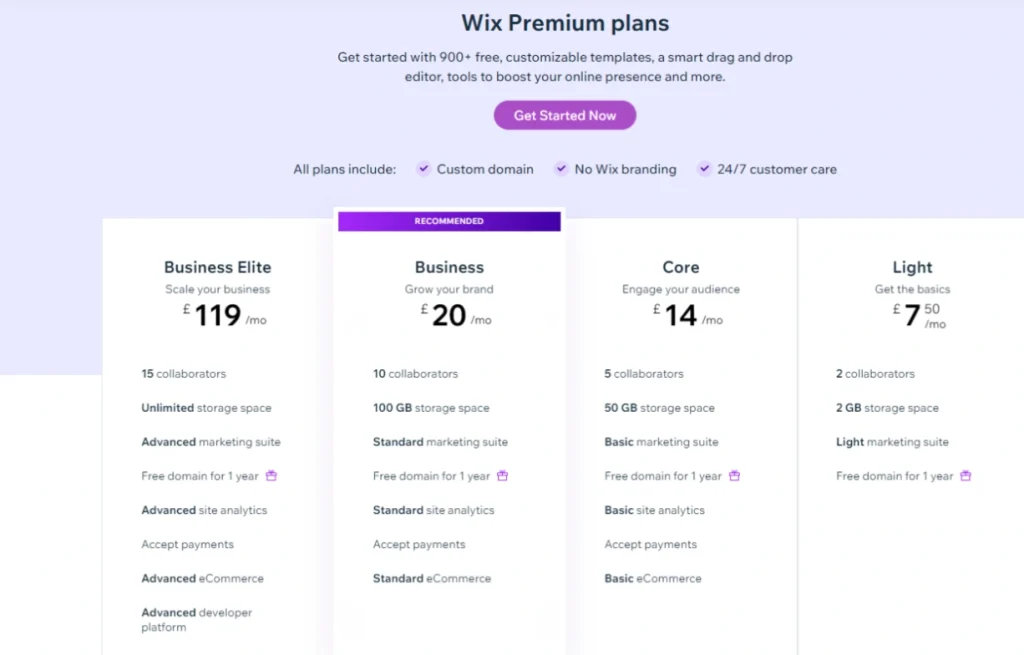
3. Webflow
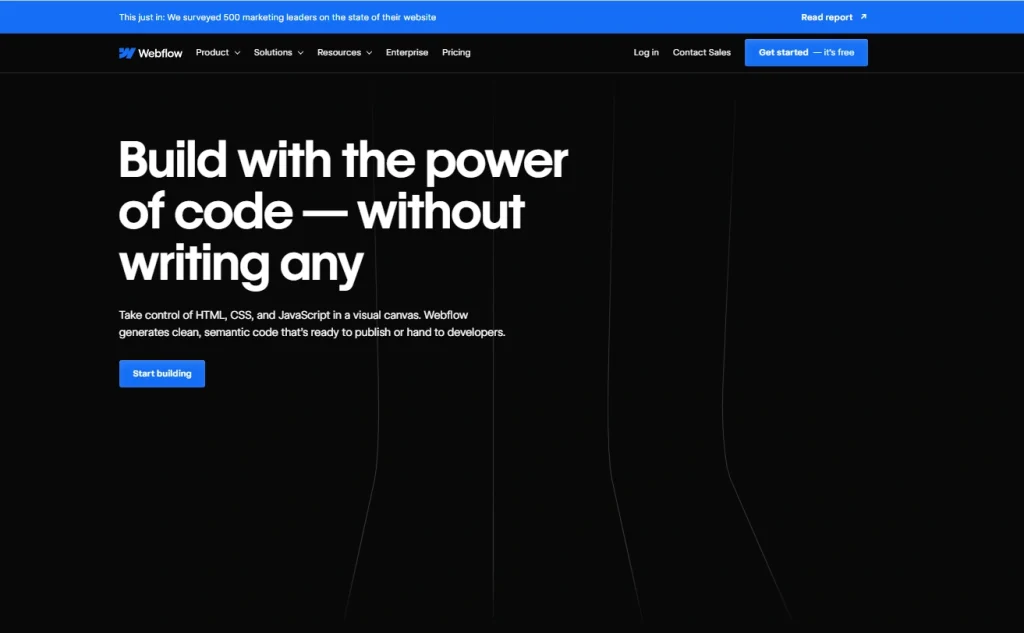
The third best platform for web development is Webflow which is a cloud-based website design and development platform that allows users to create responsive websites visually, without needing to write code. It combines the flexibility of a traditional design tool with the power of a content management system (CMS) and hosting platform, enabling users to design, build, and launch websites all in one place.
Webflow provides a visual drag-and-drop editor just like wix that lets users design their websites visually, while also offering the ability to customize the underlying HTML, CSS, and JavaScript code for more advanced customization. It’s popular among designers, developers, freelancers, and agencies looking to create custom websites with precise control over design and functionality.
Pros:
Visual design interface: Webflow’s visual editor allows users to design websites visually, making it easy to create custom layouts, animations, and interactions without needing to write code.
Responsive design: Webflow automatically generates responsive code, ensuring that websites look and function properly across different devices and screen sizes.
CMS capabilities: Webflow includes a built-in CMS that allows users to create and manage dynamic content, such as blog posts, portfolio items, and product listings, directly within the platform.
Customization options: Webflow provides extensive customization options, allowing users to customize every aspect of their websites, from typography and colour schemes to animations and interactions.
Hosting and deployment: Webflow offers hosting allowing users to publish their websites with just a few clicks and benefit from fast and reliable hosting infrastructure.
Visual design interface: Webflow’s visual editor allows users to design websites visually, making it easy to create custom layouts, animations, and interactions without needing to write code.
Responsive design: Webflow automatically generates responsive code, ensuring that websites look and function properly across different devices and screen sizes.
CMS capabilities: Webflow includes a built-in CMS that allows users to create and manage dynamic content, such as blog posts, portfolio items, and product listings, directly within the platform.
Customization options: Webflow provides extensive customization options, allowing users to customize every aspect of their websites, from typography and colour schemes to animations and interactions.
Hosting and deployment: Webflow offers hosting allowing users to publish their websites with just a few clicks and benefit from fast and reliable hosting infrastructure.
Cons:
Learning curve: While Webflow’s visual editor is intuitive, it still has a learning curve, especially for users who are new to web design and development concepts.
Limited support for complex interactions: While Webflow allows for a wide range of animations and interactions, it may not support highly complex interactions that require custom JavaScript coding.
Pricing: Webflow’s pricing plans can be relatively high compared to other website builders, especially for users who require advanced features such as e-commerce functionality or CMS hosting.
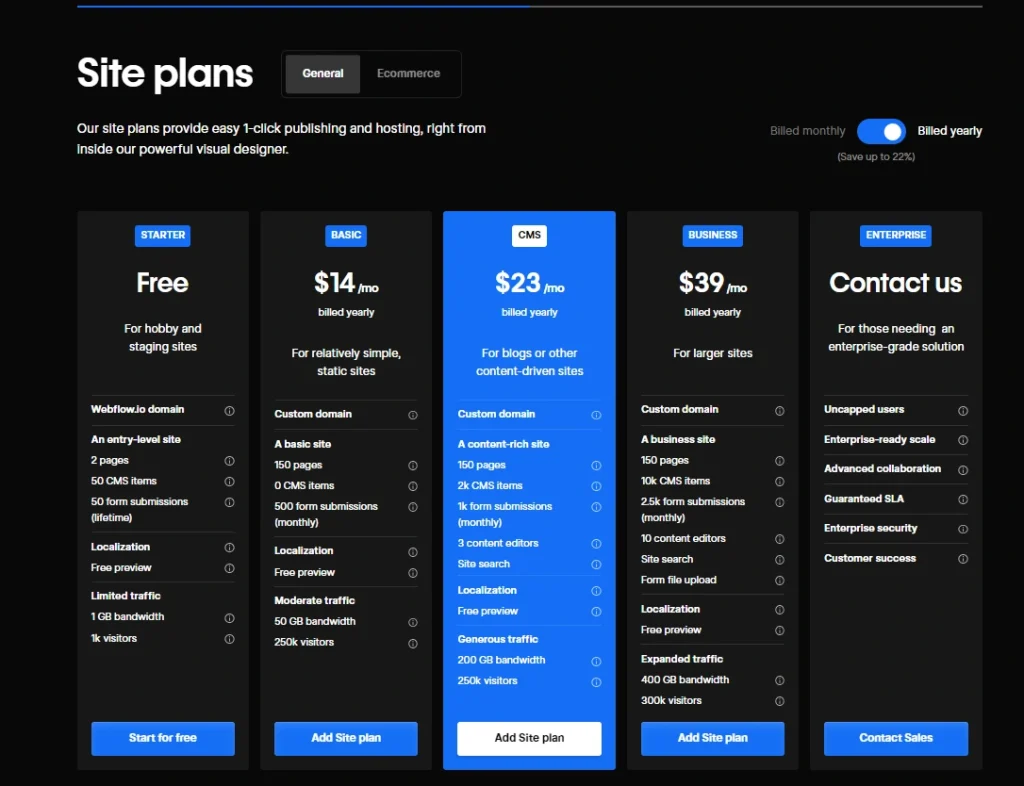
Dependency on Webflow: Since Webflow is a closed platform, users are tied to Webflow’s ecosystem and hosting services, which may limit their ability to migrate their websites to other platforms in the future.
4. Squarespace

Squarespace is a popular all-in-one website-building platform similar to wix that provides users with tools to create professional-looking websites without requiring any coding knowledge.
It offers a range of beautifully designed templates that users can customize to suit their needs, whether they’re creating a portfolio, blog, business website, or online store. Squarespace also includes features such as built-in e-commerce functionality, domain registration, hosting, and analytics, making it a comprehensive solution for individuals, businesses, and creatives looking to establish an online presence.
Pros:
Beautiful templates: Squarespace offers numerous professionally designed templates that are visually appealing and responsive, ensuring that websites look great on any device.
Easy customization: Squarespace’s drag-and-drop editor makes it easy for users to customize their websites by adding text, images, videos, and other content blocks without needing any coding skills.
Built-in features: Squarespace includes a range of built-in features and tools, such as blogging tools, social media integration, SEO tools, analytics, and e-commerce functionality, eliminating the need for third-party plugins or integrations.
All-in-one platform: Squarespace provides everything users need to build and manage their websites in one place, including domain registration, hosting, security, and customer support, simplifying the website creation process.
Customer support: Squarespace offers 24/7 customer support via email and live chat, as well as a comprehensive knowledge base and community forum, providing users with assistance and resources whenever they need help.
Cons:
Limited customization options: While Squarespace offers some customization options, users may find it more restrictive compared to platforms that allow for more advanced coding and customization.
Template limitations: Squarespace’s templates, while visually appealing, may not always provide the level of flexibility or customization that some users require, leading to websites that look similar to others using the same template.
Pricing: Squarespace’s pricing plans can be relatively high compared to other website builders, especially for users who require advanced features such as e-commerce functionality or additional storage and bandwidth.
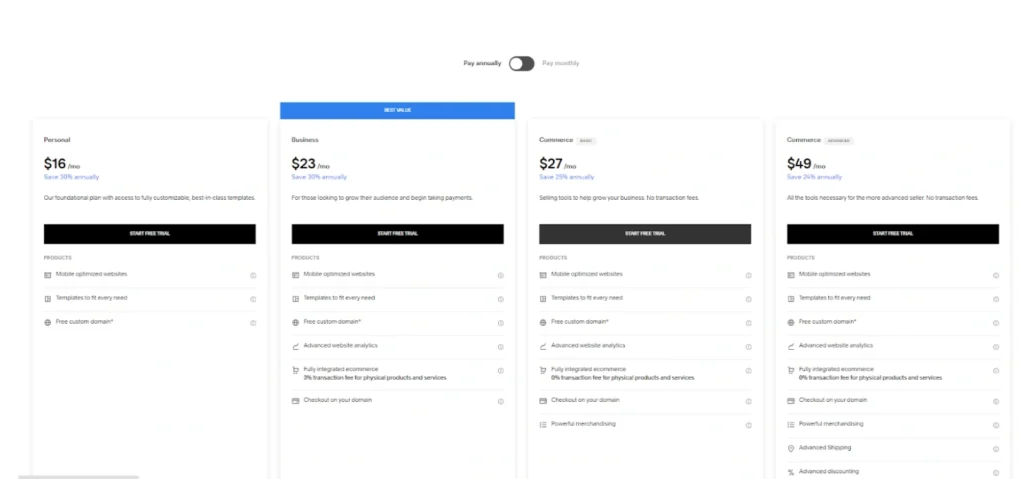
Dependency on Squarespace: Squarespace has the same issue as other platforms such as Wix. It is a closed platform, users are tied to Squarespace’s ecosystem and hosting services, limiting their ability to migrate their websites to other platforms in the future. It also creates problems in terms of expansion.
5. Joomla
Joomla is an open-source content management system (CMS) that enables users to build and manage websites and online applications. It is written in PHP and uses MySQL as its database management system.
Joomla is known for its flexibility and extensibility, making it suitable for a wide range of websites, including blogs, e-commerce stores, social networks, and corporate websites. It offers a robust set of features, including user management, content management, and extension management, allowing users to create dynamic and interactive websites with ease.
Joomla also has a large and active community of developers and users who contribute to its development, provide support, and create extensions and templates to extend its functionality and customization options.
Pros:
Flexibility: Joomla offers a high level of flexibility and customization options, allowing users to create websites tailored to their specific needs and requirements.
Extensibility: Joomla has a vast library of extensions just like WordPress repository, including components, modules, plugins, and templates, that users can use to add additional functionality and features to their websites without needing to write code from scratch.
User management: Joomla provides robust user management features, allowing users to create and manage user accounts, assign user roles and permissions, and control access to content and features on their websites.
Multilingual support: Joomla offers built-in support for multilingual websites, making it easy for users to create and manage websites in multiple languages.
Active community: Joomla has a large and active community of developers and users who contribute to its development, provide support, and create extensions and templates, ensuring that users have access to resources and assistance whenever they need it.
Cons:
Learning curve: Joomla lacks in terms of uses. There is a learning curve compared to some other CMS platforms, especially for users who are new to web development and content management systems.
Complexity: Joomla can be more complex and resource-intensive compared to some other CMS platforms, which may require more technical expertise and maintenance to keep websites running smoothly.
Extension compatibility: While Joomla’s extension library is extensive, users may encounter compatibility issues between different extensions, especially when using third-party extensions from different developers.
Security vulnerabilities: Like any open-source software, Joomla also have security vulnerabilities, and users need to stay active about applying updates and patches to keep their websites secure.
Limited theme options: While Joomla offers some default templates, users may find the selection of themes and designs to be more limited compared to other CMS platforms, requiring more customization to achieve their desired look and feel.
Dependency on Squarespace: Squarespace has the same issue as other platforms such as Wix. It is a closed platform, users are tied to Squarespace’s ecosystem and hosting services, limiting their ability to migrate their websites to other platforms in the future. It also creates problems in terms of expansion.
Conclusion
These were the top best platforms to build a beautiful website. As we have come to a conclusion. Now, it is very important to understand which one you should go for. So, if you are just starting out you can go with wix or Squarespace.
But, if you have time and patience you can always go with WordPress. It is the best and most used platform at present. Most of the websites are built on the WordPress platform in this world.
Some of the world-famous websites built on WordPress are as follows:
Techcrunch, sonymusic, TIME, Vogue, Rolling Stone
Now, let’s talk about webflow. If you are an agency or want to have a creative website and if you have prior knowledge about colours, fonts and more technical things. You can go with Webflow.
And if you are more into codes like html, css, PHP and can handle more techy things with websites. You can go with Joomla.
I hope, now you have the best option available to you. So, why to waste? Just go ahead and build for stunning website today.
Or if you don’t want to build a website by yourself. Let us do that for you. Connect with us and let us make your dream website a reality.

